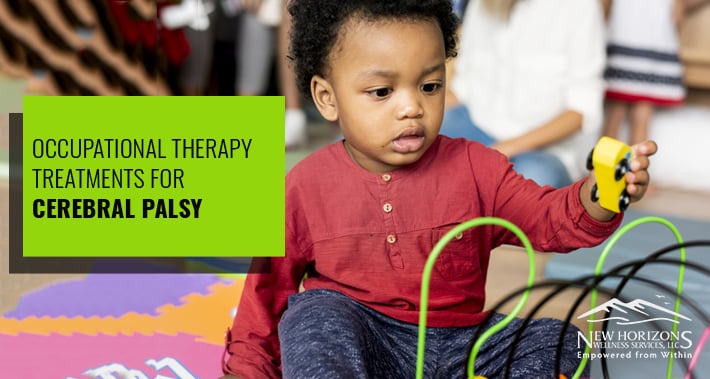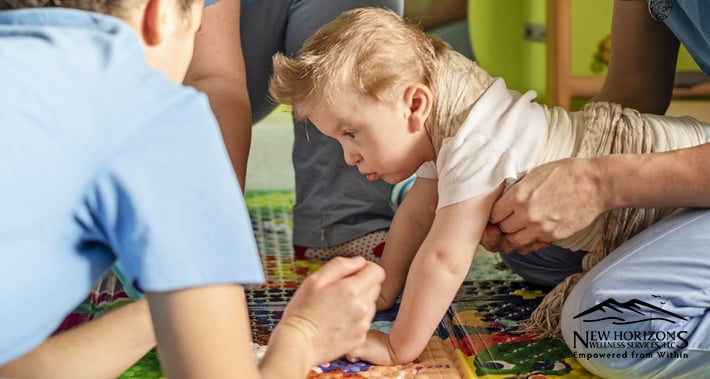
Cerebral palsy is a disorder that primarily affects muscle movement. There are many different types of cerebral palsy that have varying symptoms. As part of your child’s treatment plan for cerebral palsy, you should look into occupational therapy for kids near me.
This is because pediatric occupational therapy is an important resource to help your child build their independence by teaching them how to strategically approach their necessary day-to-day activities. Independence is the key to confidence and a high quality of life.
Now, let’s find out more.
What Is Cerebral Palsy?
Cerebral palsy is the name given to a group of disorders that affect muscle coordination and movement. It’s also possible that your vision, hearing, and sensation are also affected.
Cerebral palsy is the most common cause of motor disabilities in children and affects 1.5 – 4 out of every 1000 children. Most children are born with cerebral palsy, but may not show any symptoms until ages three to four. If you think your child might have cerebral palsy, you should contact your doctor immediately because early treatment and diagnosis is key during these early years.
Cerebral Palsy Symptoms
Symptoms of cerebral palsy are relative to the level of severity of the disorder and the part of the brain that is affected. One person might have trouble walking and sitting. Another person with cerebral palsy may have challenges holding or grabbing objects.
It’s also possible for the severity of the disorder to fluctuate over time in the same person.
Typical symptoms of cerebral palsy include:
● Muscle tone variations, either too floppy or too stiff
● Motor skill milestone delays
● Lack of muscle coordination
● Involuntary movements or tremors
● Stiff muscles and exaggerated reflexes
● Speaking delays and challenges
● Challenges walking
● Heavily favoring one side of the body
● Challenges with swallowing and drooling
● Neurological challenges including seizures, blindness, and cognitive disabilities
Are There Different Types of Cerebral Palsy?
There are a couple of different types of cerebral palsy that cause specific movement disorders and affect different parts of the brain. Now, let’s find out more about each type.
1. Spastic Cerebral Palsy
The most common type of cerebral palsy is called spastic cerebral palsy. Spastic cerebral palsy causes stiff muscles and exaggerated reflexes, which makes it very challenging to walk. You’ll notice that people with spastic cerebral palsy will often make scissor-like movements with their legs, and cross their knees while walking. They will most likely also have muscle weakness and paralysis in certain parts of their body. These symptoms can affect their entire body, or just one side.
2. Ataxic Cerebral Palsy
Ataxic cerebral palsy is distinguished by voluntary, but clumsy or jerky, muscle movements. It is the least common type of cerebral palsy, and people with it have balance and coordination challenges. This includes difficulty walking and performing fine motor functions like writing or holding objects.
3. Hypotonic Cerebral Palsy
Hypotonic cerebral palsy is characterized by diminished muscle tone and very floppy, relaxed muscles. You’ll see that people with this type of cerebral palsy have arms and legs that appear almost floppy, like a doll. They may also have challenges speaking, poor reflexes, and walking abnormalities.
4. Dyskinetic Cerebral Palsy
Dyskinetic cerebral palsy is another type that creates challenges controlling body movements. This version of cerebral palsy causes involuntary and atypical movements in your arms, legs, and hands. Your face and tongue can also be affected, and the speed of your movements can be either quick and jerky, or slow and writhing. These symptoms impact your ability to walk, sit, swallow, and speak.
5. Mixed Cerebral Palsy
It’s also possible to have mixed cerebral palsy, which is when you have a combination of symptoms from the above listed different types. A common combination is a mix of spastic and dyskinetic cerebral palsy.
What Causes Cerebral Palsy?
There are two main causes of cerebral palsy. It is either caused by abnormal brain development or an injury to the brain during development. The damage usually affects the parts of your brain that control body movement, coordination, and posture. Typically, this brain damage occurs before birth, but it can happen during the early years of childhood development. Most of the time, it’s difficult to determine the exact cause of your child’s cerebral palsy.
Some possible causes of cerebral palsy include:
● Lack of oxygen to the brain during labor and delivery
● Severe jaundice
● Gene mutations that affect brain development
● Damage caused by brain infections or illnesses
● Physical head injuries

How Can Pediatric Occupational Therapy For Cerebral Palsy Help?
Occupational therapy is an important part of your child’s cerebral palsy treatment program. This therapy will teach your child how to perform many aspects of their day to day in a way that teaches them independence, and enhances their quality of life. Your pediatric occupational therapist will train your child in adapting, compensating, and achieving maximum function levels. They’ll do this by first evaluating your child and considering their physical abilities, emotional needs, willingness to adapt and compensate, and cognitive functioning levels.
Then, your pediatric occupational therapist will also consider their home environment and existing support systems before beginning to offer suggestions for improvement.
Some key ways they do this are:
● Identifying adaptive methods to help your child complete their tasks
● Breaking down essential tasks into smaller, modified steps
● Encouraging the need and desire for independence, pride, and accomplishment
Depending on the age of your child, they may also consider their performance within their school, public, and work environments, in addition to their home environment.
Book Your Appointment With New Horizons Wellness Services Today!
You can see the importance of working with a pediatric occupational therapist if your child is diagnosed with cerebral palsy. They will be heavily involved in their development to help teach them how to thrive independently in their home, school, and work environments. As always, the earlier you start treatment, the stronger the impact it will have on your child’s development and growth. Book your appointment with New Horizons Wellness Services to schedule an evaluation today.

Yours in Health,
New Horizons Wellness Services13333 SW 68th Pkwy,
Tigard, OR 97223
- https://g.page/newhws
New Horizons Wellness Services provides a true multidisciplinary approach to mental & physical health treatments for children, adults and families.